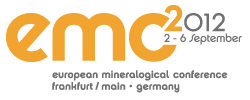|
6a Handling structural complexity: theoretical and experimental methods applied to unravel structural hierarchies |
|
Oral Programme
/ Mon, 03 Sep, 13:30–16:30
/ Room H 12
Poster Programme
/ Attendance Mon, 03 Sep, 17:00–18:30
/ Poster Area
|
Solving complex structures has become easier and easier with the development of powerful diffraction facilities and mathematical approaches for solving the phase problem and improving structure refinement methods. Even in generally poor crystallizing mineral species, provided that a discrete very small crystal is found, it is increasingly more common to obtain sufficient quality data useful for crystal structure determinations. This increase in data availability has brought out an ever increasing number of new mineral descriptions which bridge the known structural complexities and reveal new ones.
In this context, it is now possible and necessary to go beyond the mineral crystal-chemistry focused primarily on isomorphous solid solutions and to develop models that allow understanding multifaceted nature of structural hierarchies brought up by increasingly swarming species with complex relations. Whereas tools for accurate description of structure topologies along with a complete chemistry have reached their maturity, it is our feeling that methodologies which would allow prediction and explanation of complications intrinsic to a particular mineral group or mineral variety still expect significant improvement. This knowledge, intrinsic to Mineral Sciences, is one of the main challenges in the advancement of modern Mineralogy.
Contributions which increase our general knowledge of structural complexities in minerals and their mutual relations, applications of experimental and computational tools for research in structural complexities and approaches in modeling of structural hierarchies and crystal-chemistry of complex structures are warmly welcome to this session.
